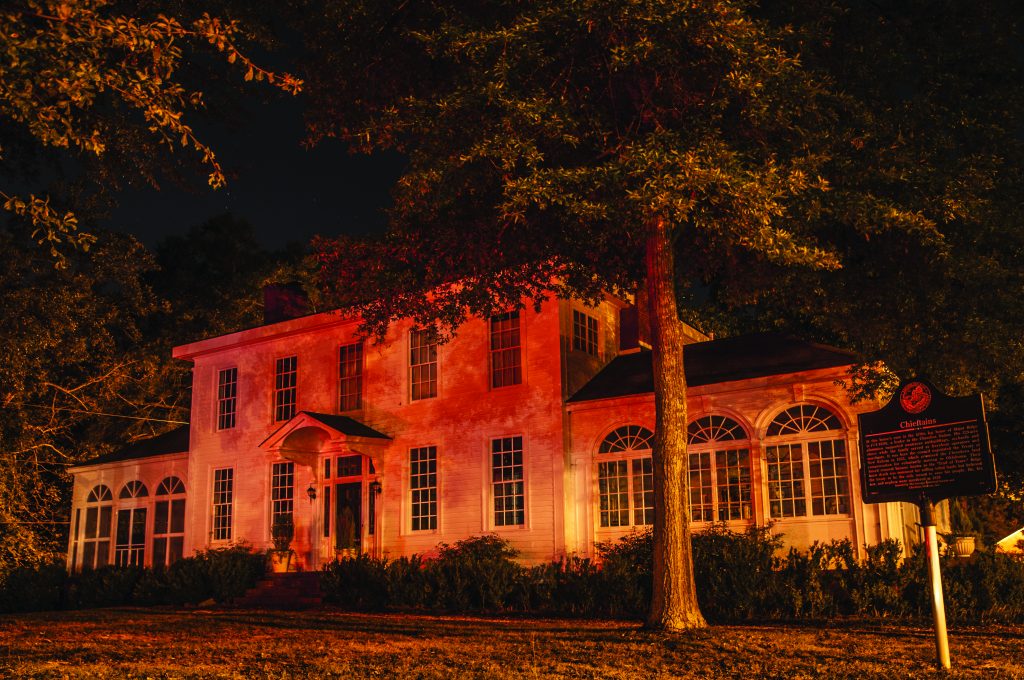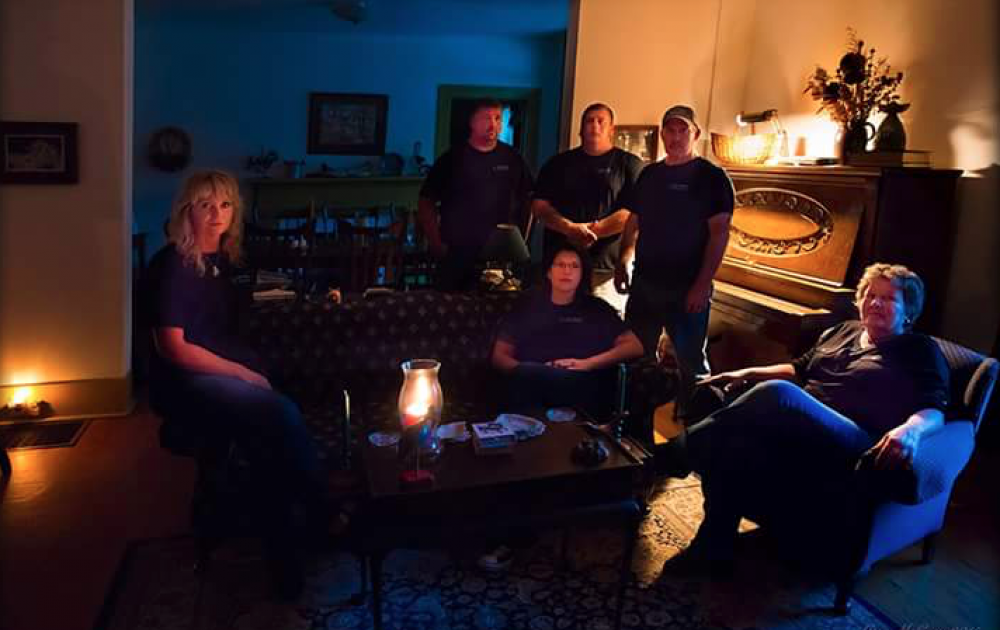
Photos by Derek Bell
Every small town has one. Whether nestled in a mountain hamlet in the foothills of the Appalachian range or the oak-lined birthplace of southern gentlemen in the Piedmont region, no community is complete without this pillar of history – the lonely white house on the corner. As an elementary student, you heard about the occasional flickering light seen in the upper window. When you entered the middle school jungle, you learned of the animal or apparition, no doubt a relic of the house’s former life, who watched and waited for any foolhardy souls brazen enough to step onto the property long after dusk and well before dawn. Finally, as a high-schooler, perhaps you became one of those foolhardy souls and even suppressed your pent-up terror long enough to knock on the time-worn door before spooking and swearing to your friends you heard a groan from inside.
For Rome, Ga., Chieftains Museum, situated between the historic downtown and the Rome Braves stadium, is the lonely white house on the corner. As with many of these historic hauntings, the house, during the sunshine hours, is harmless, almost invisible, with hundreds passing by each day oblivious to the stories surrounding the two-story structure. Because of its unimposing exterior, the average passerby would never suspect that the home houses a narrative contributing to the current cultural status of the southeastern United States. With the walls of Chieftains Museum having witnessed and overheard over 200 years of local life in Rome, it’s not surprising those sights and sounds from the deceased sometimes cross over to visit the living.
Since assuming the position of executive director of Chieftains Museum in 2013, Heather Shores has been privy to stories of a whisper, a silhouette, or a presence experienced after the sun sets and the moon rises. “People often hear footsteps. They have seen shadows of people. Others have said lights turned on after being turned off,” shares Shores. “Former employees and directors have said they would find the sink faucet on and running unexplainably in the downstairs office bathroom. Sometimes when you walk down the stairs, you do feel as if someone is behind you.”
However, for Shores, the appeal of Chieftains Museum is historical, not supernatural. Originally built in 1791, the property has been a National Historic Landmark since 1973. Major Ridge, a Cherokee leader and subject of controversial decision-making with his people, moved into the home around 1819, transforming the log cabin into its current shape and style. In the midst of managing this property bordering the Oostanaula River, a 200-acre working farm, Major Ridge also served as the principal advocate for Cherokee removal from Georgia and relocation to designated territory in Oklahoma. With local hostility growing toward the Cherokee and the resulting state and federal government decision to auction off the tribal property to Caucasian residents, Ridge, along with his supporters, believed accepting the land proposal would ensure their continued prosperity and survival. Ridge’s opinion prevailed and, consequently, the Trail of Tears commenced in 1838.
Although the Ridge family was among those in the devastating exodus, one member of the family, Major Ridge’s daughter, Nancy, died approximately 20 years before the forced relocation. The tragedy of Nancy Ridge, many believe, is the source of the home’s paranormal atmosphere.
“She did die in childbirth in 1819,” explains Shores. “We are not certain if she passed away in the Ridge house, but we have heard she is buried on the property. Most of the encounters in the house have been with her. People have seen Nancy or heard Nancy in some fashion.”
Although the specifics of her death remain uncertain, the encounters with Nancy Ridge are a regular reminder of memories now lost, shadows of the past.
For Barry Caudle, the lead investigator of Southern Paranormal Investigators, Nancy is undoubtedly the why for the creaking steps, cold shivers and mumbled voices.
“In 2007, Debbie Brown was the program director for the museum. We had heard stories of unexplained activity and we contacted Debbie. She allowed us to come out and investigate the happenings,” Caudle explains. “When we arrived, she showed us several perplexing photographs, including one of a woman who appeared to be holding a child’s hand right out front of the museum.”
Currently a team of seven, Southern Paranormal Investigators approaches any potential haunting with skepticism, always seeking a natural explanation. In keeping with this see it, or hear it to believe it attitude, Caudle says, “I kept hearing these stories about Nancy Ridge but we played it off at first. People said they would see a young woman in a period appropriate dress roaming the museum. They said you could hear her singing lullabies.”
Caudle and his team’s disbelief shifted during their first exploration. “We arrived before sunset and the first thing I noticed was how different the museum felt as soon as the sun went down,” he recalls. “It was as if there was a presence watching every move we were making.”
Not one to be impressed with only a shiver, but nonetheless conscious of the home’s eerie air, Southern Paranormal Investigators pursued a long-term investigation of Chieftains Museum, an endeavor resulting in five visits to date. After their first experience, the strange sensations became unsettling happenings.
“We were upstairs and I looked over to one doorway and saw a figure standing, watching me, a shadow,” Caudle says. “When I saw it, I walked toward it, but when I got close, it faded away. It didn’t run. It didn’t spook. It just ceased to be.”
With each of their subsequent twilight trips to this house with white siding, the presence dwelling inside became increasingly bold.

“During the third investigation, we were upstairs approximately where we believe she was when she died during childbirth,” Caudle recounts. “I kept telling her, ‘Nancy, we are going to have to leave soon. If you want us to stay we will stay. Otherwise, we need to go.’ I asked her to knock three times to signal she wanted us to stay, but we never heard the knock. However, when I went home and played back the audio recording, I could clearly hear a female voice pleading with us, ‘Please, don’t leave.’”
Caudle does not think she is menacing, but instead a lonely soul hoping to share her tragic tale, the agony of her death and the death of her child six months later. After all, when the unseen and unknown caresses your neck or your arm, no one wants to believe in any sinister motivations.
Because of these and other strange occurrences, Shores says, “I have had some volunteers who say, ‘I don’t want to be there by myself, day or night.’”
When considering the accounts of Southern Paranormal Investigators, peculiar stories from former employees of the museum, and the unexplained and repeated triggering of the museum’s motion sensors after hours, their hesitation is understandable. A dimly lit house with a gloomy history, Chieftains Museum is a portal to the past, natural or not. Maybe the shadows have an outdoor explanation and perhaps the creaks belong to the 200-year-old structure, but it is difficult to silence the mourning lullaby of a young woman.
In keeping with the ghostly atmosphere of the home, Chieftains Museum will host a family-friendly Ghost Story Night on Halloween with professional storytellers. “We can’t guarantee you’ll hear footsteps when you come in,” says Shores, “but we can’t guarantee you won’t.”



